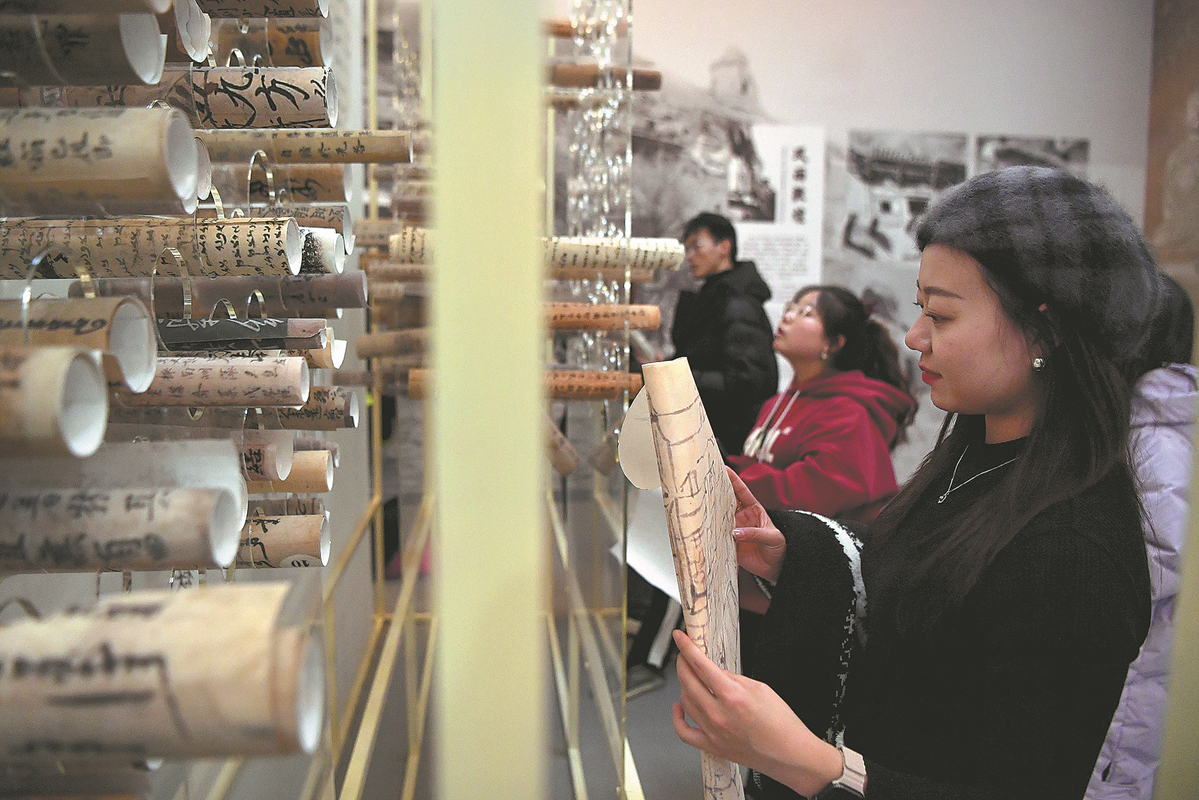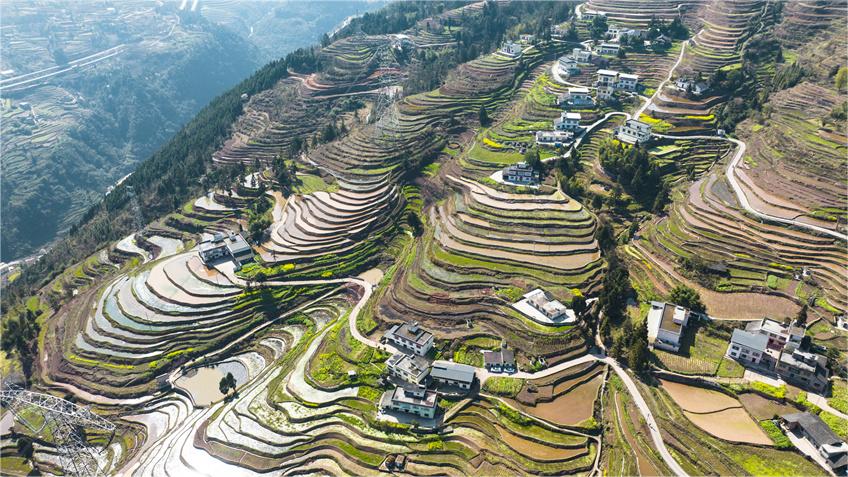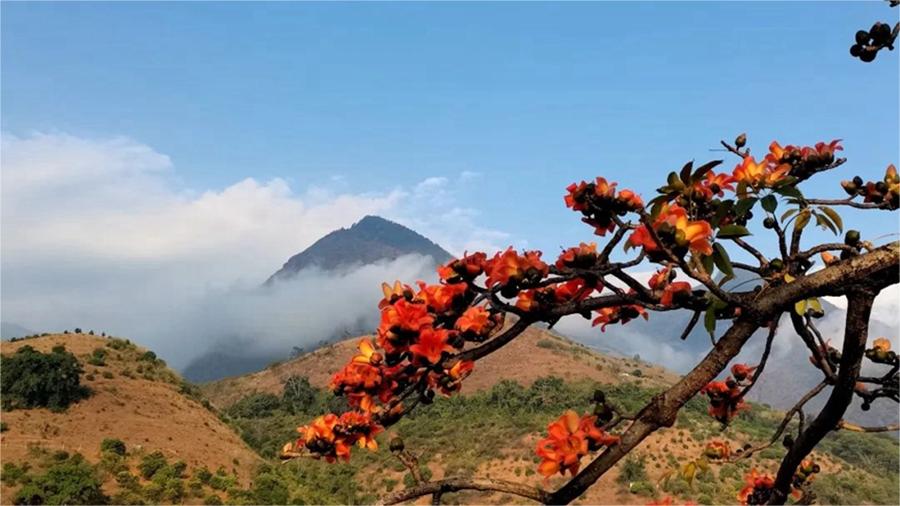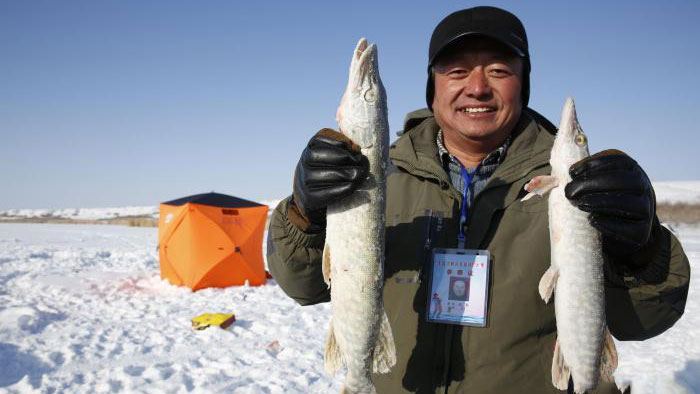Dunhuang Academy's protection team work to ensure relics not lost to sands of time
The Dunhuang Academy's cultural relics protection team was honored with the title of National Outstanding Engineering Team early this year, China's highest honor in the field of engineering.
Su Bomin, the director of the Dunhuang Academy and head of the cultural relics protection team, has been involved in mural protection work for nearly 40 years, while the Dunhuang Academy's cultural relics protection team has expanded from four members in 1992 to over 200 members today.
They have successively rescued and preserved cultural heritage sites in 153 locations across 13 provinces and regions, providing a Chinese solution for the protection of ancient murals and polychrome sculptures worldwide.
"Through the continuous efforts of several generations at the Mogao Grottoes, effective protection and management have been achieved, gradually restoring the site's former glory," Su said.
The Mogao Grottoes stands as the largest and best-preserved Buddhist cave art site in the world, with 735 caves spanning a cliff face 1,700 meters long, containing over 45,000 square meters of murals and more than 2,000 polychrome sculptures.
It is one of only two heritage sites in the world that meet all six criteria for World Cultural Heritage.
The protection and restoration of cultural relics such as the Mogao Grottoes have garnered attention worldwide. The Dunhuang Academy has collaborated with countries such as Kyrgyzstan and Afghanistan, promoting a complete set of techniques for cultural heritage protection.

A relic worker restores wall paintings in Cave 55 of the Mogao Grottoes in Dunhuang, Gansu province, in August. LI HE/XINHUA
In the past five years, Dunhuang art exhibitions have been held in dozens of locations both domestically and internationally, leaving a mark in countries such as the United Kingdom, Germany and Austria.
Enduring more than 1,600 years, the allure of the Mogao Grottoes remains, thanks to efforts made through generations. However, during the restoration and protection process, Su's team has encountered many challenges such as those found in the murals in Cave 85.
Su said that murals typically consist of three layers — a support layer, a ground layer and a pigment layer. Cave 85's 110 sq m of murals exhibit three typical diseases of the Mogao Grottoes — flaking, detachment and efflorescence.
He said that these issues are caused by soluble salts within the murals. As temperature and humidity fluctuate, these salts continuously crystallize and exude through the murals, leading to their gradual deterioration.
"At first, after analysis and research in Cave 85, the conclusion was that the problems were unsolvable at that time," Su said.
To find solutions, the cultural relics protection team, in collaboration with experts from the Getty Conservation Institute in the United States, attempted to relocate the soluble salts to the surface and then desalinate them through injection.

A student copies a wall painting from the Mogao Grottoes during a study tour in Dunhuang in February last year. ZHANG XIAOLIANG/XINHUA
After four years and the formulation of 81 different recipes, they finally developed a suitable injection formula through repeated improvements.
With the "prescription" in hand, the next step was how to apply it.
Fan Zaixuan, a member of the cultural relics protection team, has been involved in the restoration of ancient murals for 43 years.
He explained that mural restoration demands extremely precise work and allows no room for error. Conventional tools are inadequate for mural restoration, so the team designed their own restoration instruments.
They replaced the plunger of a traditional syringe with an ear syringe, creating a device that looks like a needle with a balloon attached at the bottom.
"This was to allow for more injection material and to better control the injection volume," Su explained.
After eight years, the bottleneck issues in Cave 85 had been resolved.
"This was a process of going from zero to one," Su said.

Visitors peruse paintings and scripture scrolls at Dunhuang Art Gallery, which is operated by the academy, in Lanzhou, Gansu province, in April. CHEN BIN/XINHUA
In the early 1990s, China had not yet achieved unified technical protection and site management. This restoration directly prompted the introduction of the Chinese Cultural Relics and Historical Sites Protection Guidelines, providing a set of ideas and methods for the protection of China's cultural relics.
Regarding future development, Su said, "We hope to make Dunhuang better known to the world through our efforts." He added that the digitization of Dunhuang plays an irreplaceable role in this endeavor.
The Dunhuang Academy began exploring digitization in the late 1980s.
On May 1, 2016, Digital Dunhuang was officially launched, allowing people worldwide to appreciate the exquisite murals in 30 caves of the Mogao Grottoes online.
By 2022, they had completed high-precision data collection for 300 caves, more than half of the numbered caves in Dunhuang.
"There is nothing that can be preserved permanently; the ultimate fate of the Mogao Grottoes is continuous degradation. What we, throughout our lives, are doing is resisting destruction, striving to preserve the Mogao Grottoes for a longer time," said Su, remembering the words of Fan Jinshi, the honorary director of the Dunhuang Academy.
Yan Zhongqian contributed to this story.
Photos
Related Stories
- Airport near China's world heritage site resumes int'l air routes
- Dunhuang sees 86.6 pct rise in tourists year on year
- Protection of Dunhuang high on Xi's cultural agenda
- Dunhuang culture exhibition held in N China
- 'Dunhuang, a crucial Silk Road hub between East and West': Cambridge professor
- Exploring the unique charm of NW China's Dunhuang in winter
Copyright © 2024 People's Daily Online. All Rights Reserved.









